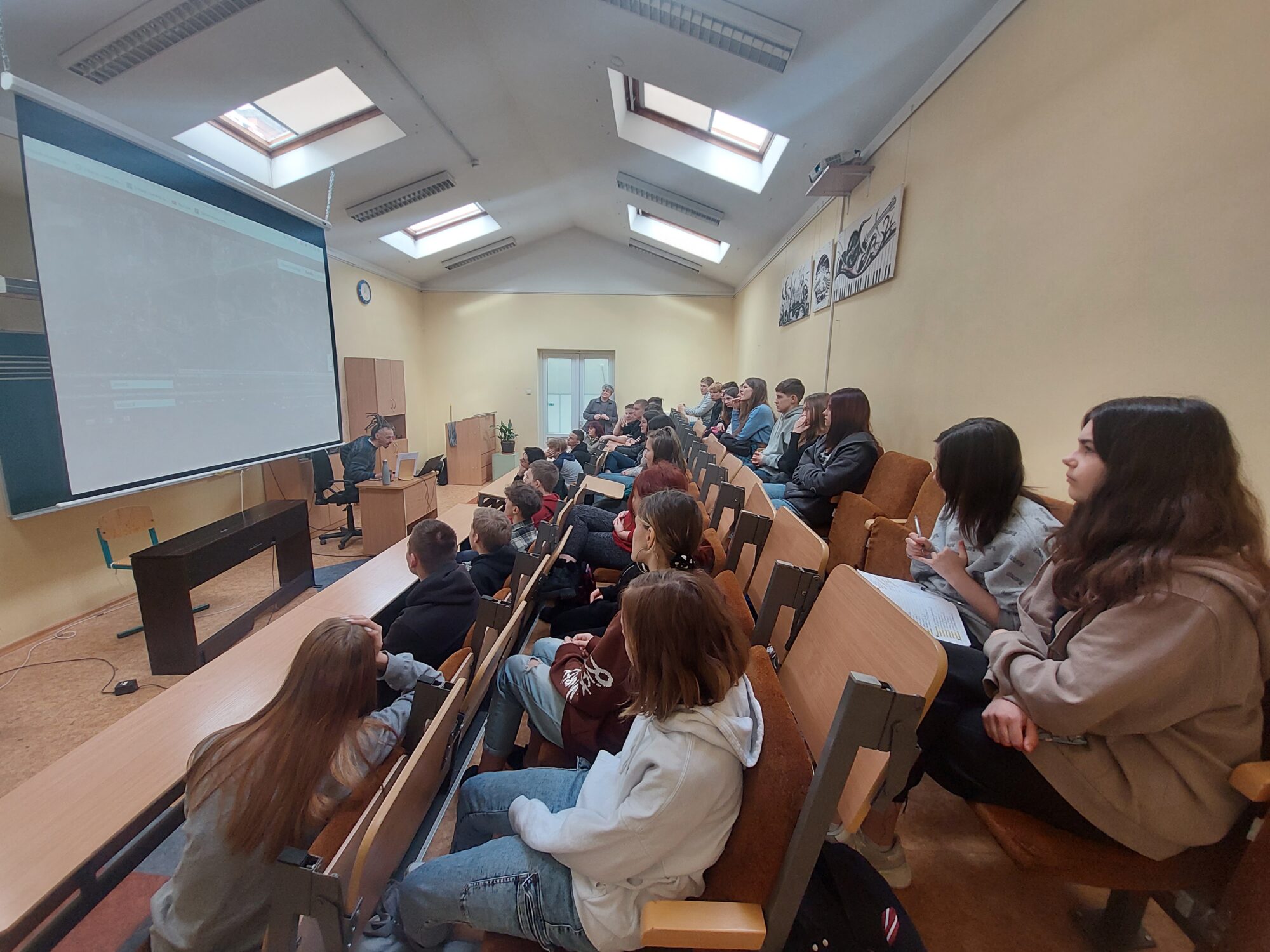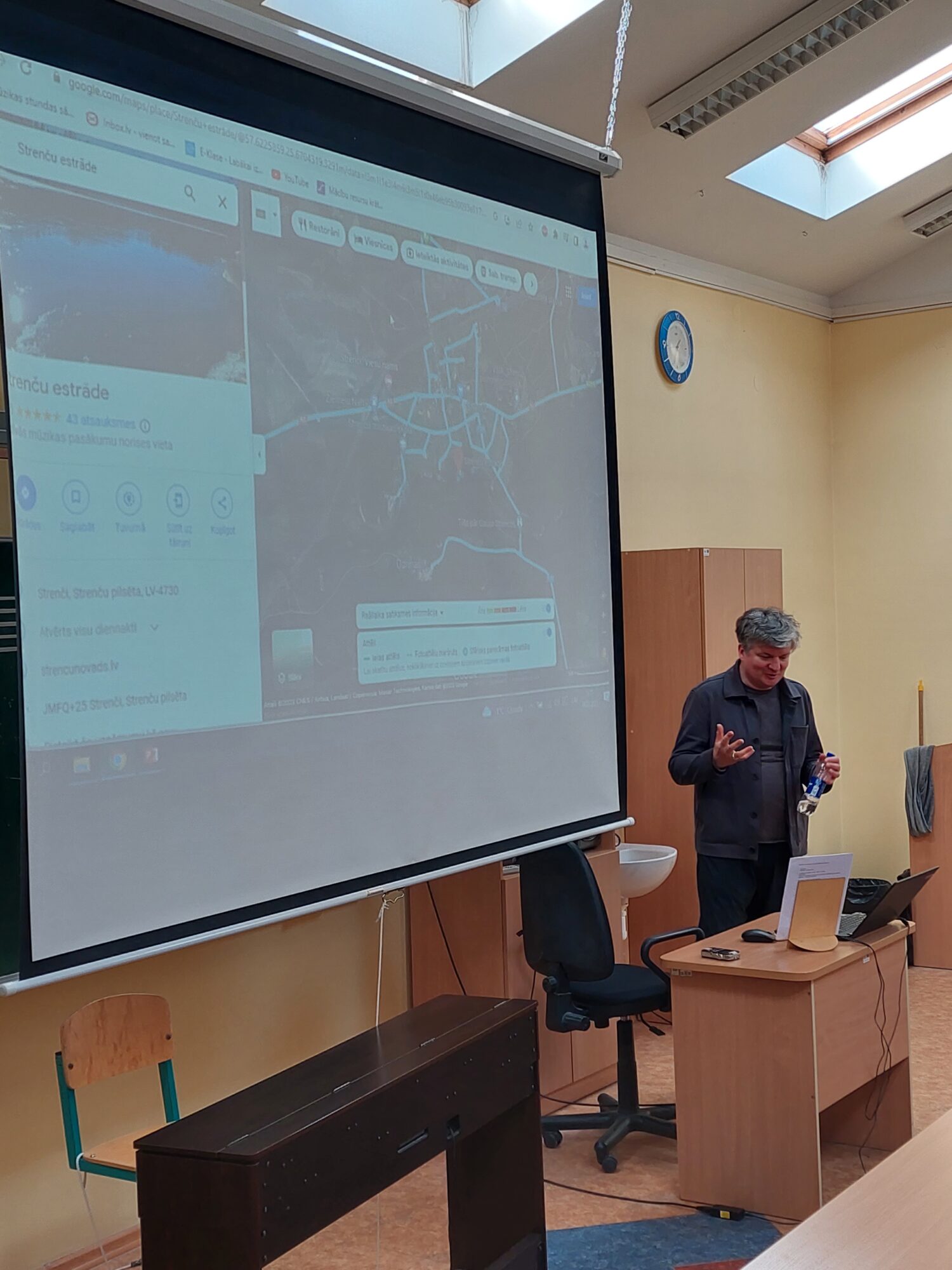March 20, 2023
Artists Artūrs Punte and Maksims Šenteļevs on their second visit to the Strenči Primary School

On March 6 the artists Artūrs Punte and Maksims Šenteļevs went on their second visit to the Strenči Primary School. This time, the artists introduced the students with the capabilities of sound for documenting the surrounding environment and invited them to partake in the project activities over the following weeks.
The visit took place in two groups, first with students from Grades Eight and Nine and then Six and Seven. Both meetings started with introductory remarks, with the students being asked to tell a little about themselves – what town they’re from and what music they listen to every day. Afterwards, art mediator Mariona Baltkalne gave the students a glimpse of the sheer variety of contemporary art, such as performances, environmental objects, multimedia works, opera, and ceramics. The students were presented with examples of different works by artists from Latvia and abroad, many of whom are known internationally. M. Baltkalne explained that, over the duration of the project, the students would have the chance to learn more about a distinct form of contemporary art, namely sound art, and brought up the future activities planned within the framework of the project Artist is Present – Contemporary Art Residencies in Schools, i.e., the creative camp in Valmiera in the summer and the Survival Kit festival in the fall.
Continuing the workshops, the artists explained that, just like images, sound, too, can give people an idea of a specific geographic place. To this end, people can upload sound materials on the internet, which people from across the world can then easily access. M. Šenteļevs played the only sound file on Strenči available on the internet. The students recognized the source of the sound – a musical instrument in the town park – very easily. Seeing as this was the only material on Strenči, the artists said it’d be valuable to upload other sounds from the town on the internet, enriching the sound map of the surrounding area and making Strenči the most sonified town there is, much like the photographer Dāvis Spunde once made it the most photographed town of all. Students could likewise ask to hear what other places across Latvia and the world sound like, such as local Ventspils or, internationally, India, Italy, Kazakhstan, and Africa. Based on the students’ ideas, M. Šenteļevs created a veritable sound performance by playing the sounds of different places simultaneously and then bringing the sound of a single location to the fore, making the others silent, and vice versa. Afterwards, A. Punte gave a more detailed idea of what the students had to gain from recording the sounds of Strenči. For example, the students could create their own sound routes, conduct guided audio tours across Strenči and play back their recordings in concert form. The students shared their ideas as to what sounds from the town they would like to record the best, such as the crunching of snow, birdsong, the waves of the river, the school bell, and the railroad.
In parting, the artists invited the students to write down five to ten sounds they have experienced by the next time as well as the feelings that these sounds inspired. Over the next weeks, they will be learning how to record sounds. In concluding the workshop with Grades Six and Seven, they made a sound recording together. The students used their keys as well as their hands and the tabletops to create a minute-long wave of sound that M. Šenteļevs recorded.
Following the workshop, the artists as well as the art mediator met principal Dace Gaigale and other teaching staff, coming to agreement that they will discuss the workshop experience with the students to learn how many of them would be willing to partake in the next sessions. The next meeting with the students is to take place in late March following spring break.



